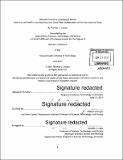Network control in a globalized world : how Visa and Swift's founding structures serve their stakeholders on the International stage
Author(s)
Cowan, Thomas C., S.B. Massachusetts Institute of Technology
DownloadFull printable version (2.703Mb)
Alternative title
How Visa and Swift's founding structures serve their stakeholders on the International stage
How Visa and the Society for Worldwide Interbank Financial Telecommunications founding structures serve their stakeholders on the International stage
Other Contributors
Massachusetts Institute of Technology. Program in Science, Technology and Society.
Advisor
William Deringer.
Terms of use
Metadata
Show full item recordAbstract
The Visa credit card network and the Society for Worldwide Interbank Financial Telecommunications (Swift) network both provide a backbone for financial interchange across the world. Visa's network connects consumers, merchants, banks, and processors to ease the purchases of millions of consumer-facing products worldwide. Swift's interbank network connects banks, corporates, and other financial institutions to ease the flow of high-value, highly-secure international financial transactions. Both networks grew to become industry incumbents in the second half of the 20th century, connecting nearly every country on earth. However, the globalized networks differ in their organizational structures: Visa utilizes a centralized, U.S. focused, hub-and-spoke model; Swift uses a decentralized, transaction-volume neutral, point-to-point network. Although Visa's centralized network fosters innovation, standardization, and security, its U.S.-centered hub pulls the organization from global neutrality and aligns it with the United States on global issues. Meanwhile, although Swift's decentralized network nurtures technological localization-at the expense of technological standardizationits transaction-based global governing structure promotes a relative international neutrality among global organizations. This contrast between Visa and Swift-both networks that balance local and global, centralized and decentralized, and technical and non-technical tensions across the world-reveals the structural effects of worldwide networks, and how network system design impacts global stakeholders in the societies that they touch.
Description
Thesis: S.B., Massachusetts Institute of Technology, Program in Science, Technology and Society, 2017. Cataloged from PDF version of thesis. Includes bibliographical references (pages 51-55).
Date issued
2017Department
Massachusetts Institute of Technology. Program in Science, Technology and SocietyPublisher
Massachusetts Institute of Technology
Keywords
Program in Science, Technology and Society.